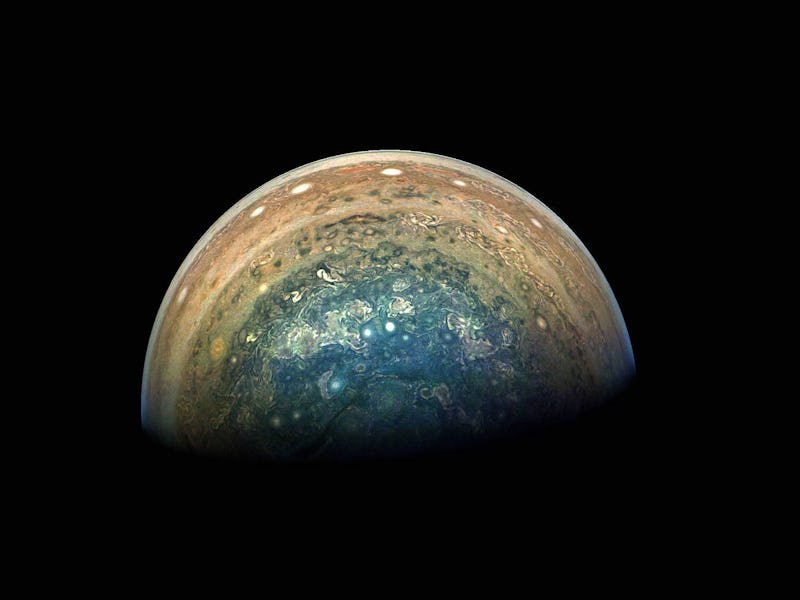This Picture of Jupiter's South Pole is Beyond Mesmerizing
It's like a kaleidoscope.

Though we here at Inverse are firmly Team Saturn, it would be negligent, even outright disrespectful, for us not give a shoutout to how damn majestic Jupiter looks in the picture below.
This image of the planet’s south pole was captured by NASA’s Juno spacecraft — a probe that has been orbiting the gas giant since July 2016 — as it completed its tenth close flyby of the largest planet in the solar system. Juno snapped this shot on December 16, 2017 as it was about 64,899 miles from the top layer of the planet’s clouds.
This is a side of Jupiter that we rarely get to see, as most pictures of the heavenly body try to catch a glimpse of the Great Red Spot — a humongous storm that’s possibly been raging for centuries. It turns out that our planetary neighbor has more than just one good side.
Jupiter’s swirling south polar region was captured by NASA’s Juno spacecraft
The reason why Jupiter looks like a view from a kaleidoscope is because the planet doesn’t actually have solid surface to land on. It’s one gargantuan ball of circulating hydrogen and helium. The deeper you delve into the planet, the hotter and more pressurized things become, causing the layers and sharp divisions of color seen in the picture.
Don’t be fooled though, this image has been color-enhanced by citizen scientist Gerald Eichstädt, using data from Juno’s camera. This process might undercut how large Jupiter seems to be in the photo, when in reality it’s actually colossal. It’s possible to fit 11 Earths across the thing ring of dust that surrounds the planet. In fact, it’s two and a half times more massive than all the other planets orbiting the sun combined.
Juno is expected to complete another 27 more orbits of the gas giant before completing its journey, so let’s hope it’s able to capture more stunning images of the second dopest planet in our solar system.